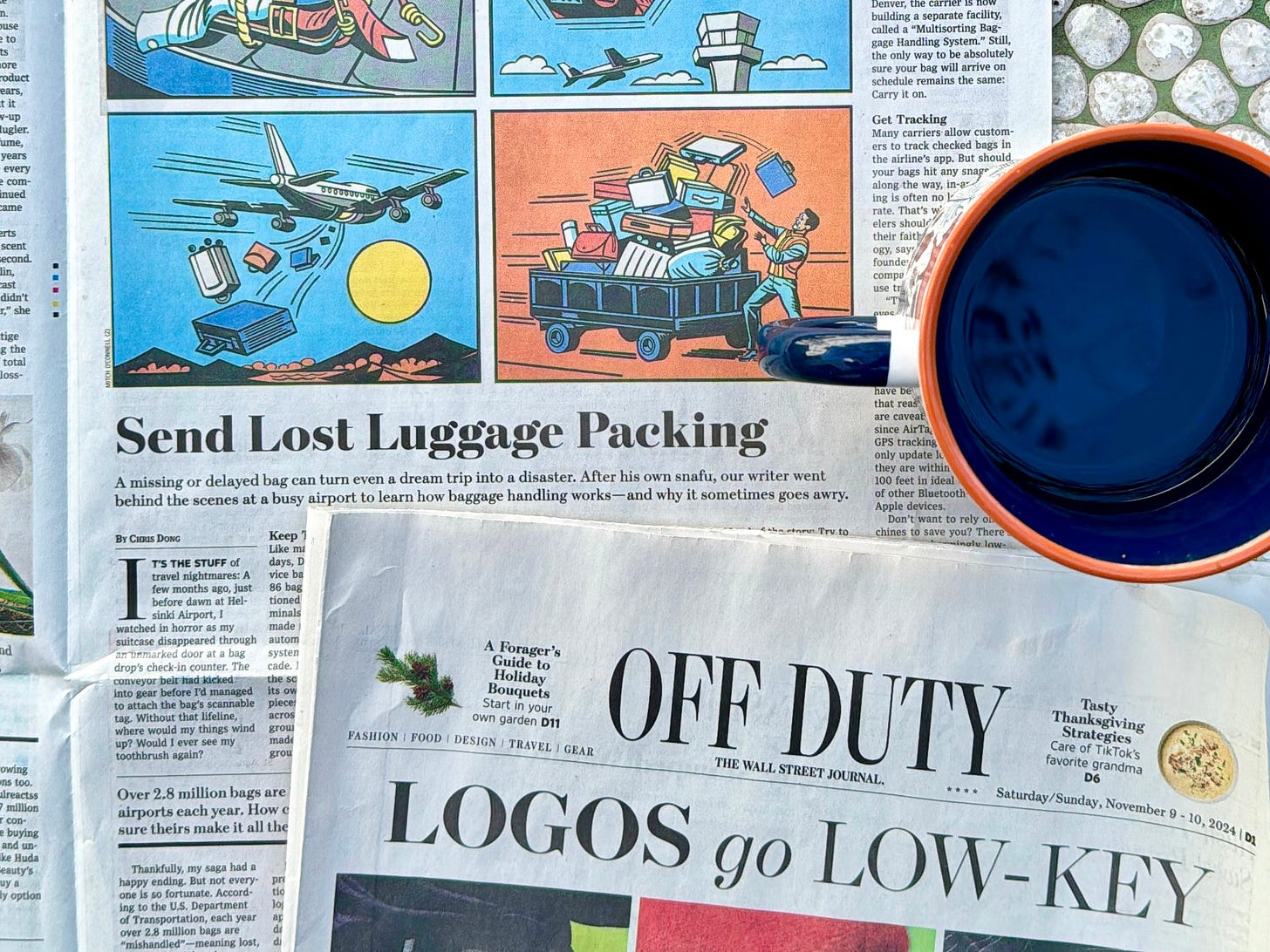Checking in...with how a travel story gets made.
And I'm headed to Antarctica next.
I’m a believer in learning from your travel mistakes—and in my case, writing about them. So how can a travel mishap turn into a story?
Let’s dive into it.
Turning lemons into lemonade
See, I love having a finger on the pulse of travel news and writing service-oriented content that impacts everyday consumers. At the same time, I also want to write about—and experience—trips that truly inspire.
This is a major generalization, but I think of these two areas of travel writing as the distinction between content that’s in a newspaper spread vs. a magazine spread.
Let’s talk about the former, and how a travel service story gets made.
Generally, it starts with me doing something foolish.
The mishap: Over the summer, I had a mishap at Helsinki Airport (while en route to the Paris Olympics, but that’s not really relevant). It was in the early morning hours when I watched in horror as my suitcase disappeared through an unmarked door at a check-in counter bag drop area. Essentially, the conveyor belt had kicked into gear before I’d managed to attach the bag tag.
While I had a happy ending (and I got my suitcase back), it got me thinking about what lay behind the check-in counter. Where do checked bags go while en route to your plane? It’s a black hole that no one knows about.
The pitch: A couple of months later, I pitched a story to an editor at the WSJ, someone who I had worked with when they were at a different publication. The angle of my pitch was “a day in the life of a checked bag,” essentially walking through the reader where your checked bag goes—and some of the scenarios in which it could get lost.
I explained this in a brief paragraph and pegged the story to my personal experience. It drove the narrative forward, but it didn’t make me the center of the piece. The editor greenlit the article.
Writing: I reached out to several airports for a tour, and finally got Denver International Airport (DEN) to give me a behind-the-scenes look at their complicated network of baggage systems. I interviewed DEN’s head of conveyance systems, watched all the machines and contraptions do their thing, and wrote up a story.
The result? My first story for WSJ which was published over the weekend: “Lost Your Luggage? Here’s What Probably Went WrongWhere I’m headed next.”
Being a self-sufficient traveler
When I started doing this full-time freelance thing a couple of years ago, it surprised me to see some folks in this line of work struggle with travel planning, logistics, and some of the other nitty-gritty aspects of trips. After all, shouldn’t we be the experts in this?
However, I quickly realized that wasn’t always the case. There’s often a distinction between writers who do service-oriented stories (the tips and tricks type of pieces) and those who pen features and inspire us to go somewhere or do something (the magazine spreads).
This isn’t a knock against writers who focus more on the latter, but more of an observation that press trips—especially ones meticulously curated by PR professionals—do so much of the travel hand-holding and legwork.
In doing so, we miss some of the organizing, the booking of flights, and most of all, the mistakes that are made. These are things that a good majority of the public must do themselves—and over time, it makes them savvier travelers.
For travel writers and editors who only live in the ecosystem of press trips, there may be some of that missing link to the average travel consumer, or inability to be fully self-sufficient.
I’m on TikTok…
In an attempt to stay relevant in the ever-changing and chaotic world of media, I’m going to start posting on TikTok—mostly explainers to stories that I write but also interesting observations and more.
 Tiktok failed to load.
Tiktok failed to load.Enable 3rd party cookies or use another browser
Checking in from LA,
Chris






Hahaha the bag story is so good
Hey Chris! This was fun to read. I appreciate the note about how well-planned press trips can be--we try our best to keep it streamlined!